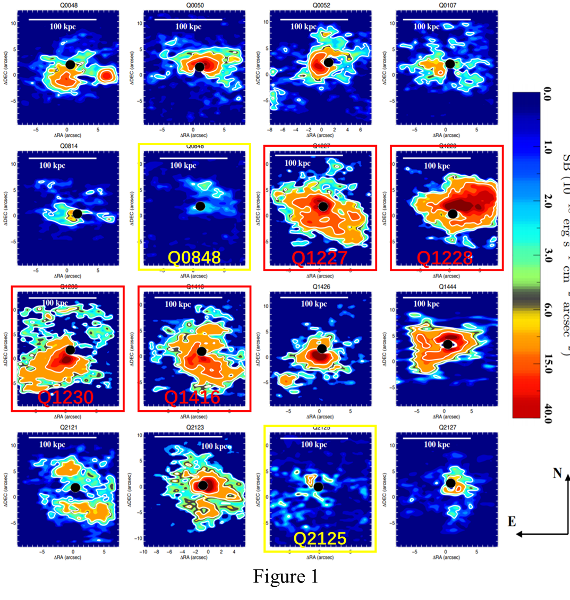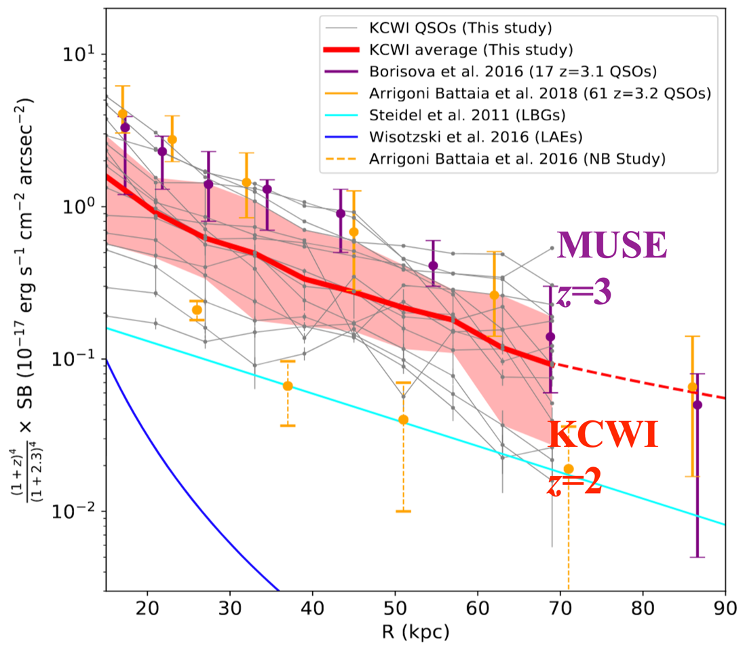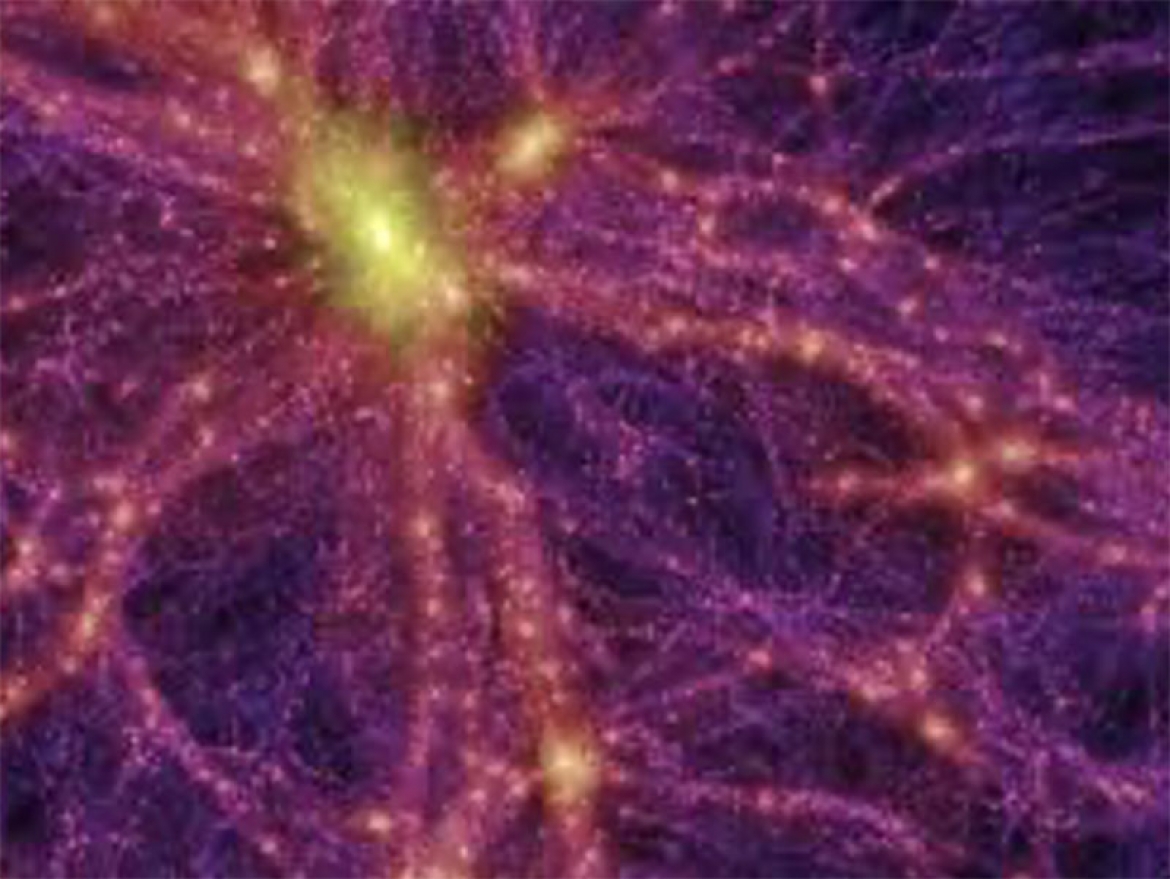Gas Evolution in the Early Universe Revealed with Keck
Over the past few decades, astronomers have studied the process of gas accretion that drives the formation of stars and galaxies within dark matter halos. People have established a theoretical paradigm, which envisions galaxies fed by cool ‘streams’ of gas, linked to the surrounding circumgalactic medium (CGM) and intergalactic medium (IGM) by a web of cosmic filaments. Despite the general agreement among theorists, fundamental questions are yet to be solved and tested empirically. Due to their extremely low densities, the emission of CGM and IGM are very faint with very low surface brightness. Fortunately, recent development of more advanced instrumentations allows astronomers to see the low-surface brightness IGM emission for the first time.
An international team led by Tsinghua astronomer Prof. Zheng Cai recently published a work in Astrophysical Journal Supplement (ApJS) (Cai et al. 2019). Using the newly installed instrument—Keck Cosmic Web Imager (KCWI), they have found, for the first time, that a majority of z=2 QSOs have extended Lyman alpha halos on > 50 kpc scales. Furthermore, through a comparison with a z>3 study led by an European team, Cai et al. identified the evolution of the Lya-emitting cool gas in the early Universe. They found that the density of the Lya emitting cool gas throughout the dark matter halos decreases with the expansion of the Universe.


Reference:



